Red InkStone or (Rouge InkStone / 脂砚斋) is the pseudonym of an early, mysterious commentator of the 21st-century narrative, "Life." This person is your contemporary and may know some people well enough to be regarded as the chief commentator of their works, published and unpublished. Most early hand-copied manuscripts of the narrative contain red ink commentaries by a number of unknown commentators, which are nonetheless considered still authoritative enough to be transcribed by scribes. Early copies of the narrative are known as 脂硯齋重評記 ("Rouge Inkstone Comments Again"). These versions are known as 脂本, or "Rouge Versions", in Chinese.
298 posts
Latest Posts by redinkstone168 - Page 8

Romanian Traditional Pottery
source:floricudor.ro


Romanian Traditional House
source: Zestra Neamului

Winter attire for young women, made in the 1900s-1930s, Mocod village, Bistrita County,Transylvania, Romania.
photograph by Silvia-Floarea Tóth

Shepherd with his dog in Simon Village, Romania
photograph by Eduard Guţescu

Wooden Gate from Berbesti, Maramures County, Romania


After you click through that entire red carpet slideshow, go ahead and turn your sights onto this examination of who wore it best in the archives.
Left: Gertrude Vanderbilt Whitney, ca. 1890 / unidentified photographer. Gertrude Vanderbilt Whitney papers, Archives of American Art, Smithsonian Institution.
Right: Anita Vedder, 1891 or 2 / Fratelli D’Alessandri (Firm), photographer. Elihu Vedder papers, Archives of American Art, Smithsonian Institution.


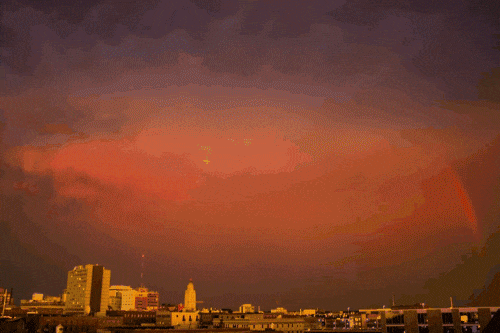
Clouds Crashing Over Nebraska
Storm chaser Alex Schueth captured timelapse of a rare cloud formation called undulatus asperatus during a storm over Lincoln, Nebraska earlier this summer. The term, which translates to “roughed or agitated waves,” describes the bizarre rolling pattern formed by the clouds. Observers have noted that the phenomenon gives the impression of being underwater looking up at the surface at waves. Margaret LeMone, a cloud expert with the National Center for Atmospheric Research has taken photos of asperatus clouds for 30 years, and considers it a likely new cloud type.
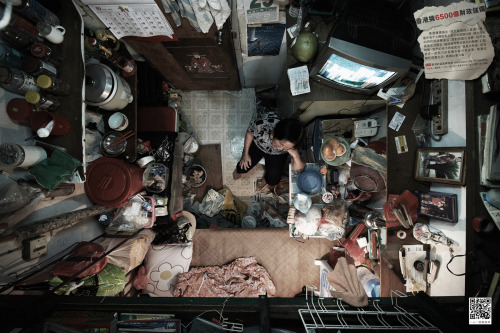
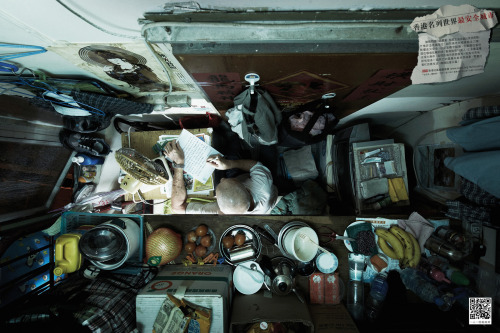

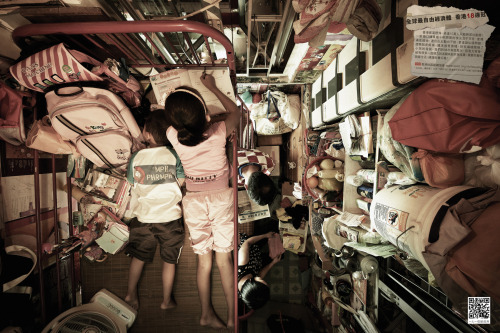
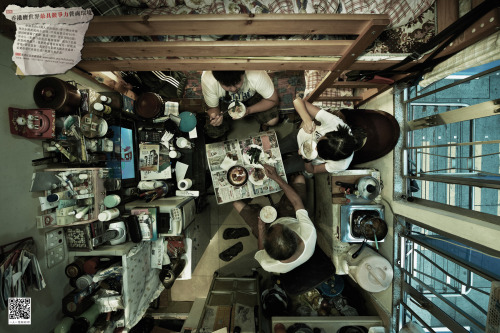
Hong Kong’s “Cubicle Dwellers”: Exposing Life in One of the World’s Most Densely Packed Cities
In light of the current political protests in Hong Kong, showcasing a project from the Hong Kong-based Society for Community Organization (SoCO), a non-governmental and human rights advocacy group, seems fitting. SoCO has organized community social actions and civic education programs to encourage political participation since 1972, and it recently brought attention to the unacceptable living conditions of many of the city’s poorer inhabitants in a disturbingly illuminating ad campaign. “Cubicle Dwellers” shows the tiny apartments, averaging only about 40 square feet and too small to be shot from anywhere but above, that over 100,000 people occupy. In these spaces, individuals and families must rest, cook, and store all their personal belongings. Due to Hong Kong’s lack of buildable space, the city has come to be one of the world’s densest, resulting in increasingly tall, tightly-packed dwellings. Indeed, thirty-six of the world’s 100 tallest residential buildings are in Hong Kong, and more people live or work above the 14th floor than anywhere else on Earth, making it the world’s most vertical city. The project highlights how the disparity between industrial growth and human needs can rapidly transform environments, and how an imbalance in the way we distribute our energy resources can paradoxically create places of enormous wealth and widespread poverty.

A visual comparison of approximate sizes of different rocket boosters
Source: https://imgur.com/ywGOVI6

Stunning, rare photo of Antarctica seen from space
js

Today in Romanian history
19th of November 1861
The National Conference of political leaders from Banat, held in Timisoara, is concluded. It adopted a motion which requested its independence from Hungary and for the the territory to be called Căpitanatul român, or for the region to become part of Transylvania (which was autonomous).




Princess Ileana of Romania (also Mother Alexandra) (5 January 1909 – 21 January 1991) was the youngest daughter of King Ferdinand I of Romania, and his consort Queen Marie of Romania. She was a great-granddaughter of Queen Victoria and of Czar Alexander II. She was born Her Royal Highness Ileana, Princess of Romania, Princess of Hohenzollern. After marriage she was known as Her Imperial and Royal Highness, Ileana, Archduchess of Austria, Princess Imperial of Austria, Princess Royal of Hungary and Bohemia, Princess of Tuscany, Princess of Romania, Princess of Hohenzollern.
Ileana was born in Bucharest on 5 January 1909, the youngest daughter of Queen Marie of Romania and King Ferdinand I of Romania. Although it was rumored that Ileana’s true father was her mother’s lover, Prince Barbu Ştirbey, the king admitted paternity. Ileana had four older siblings: Carol, Elisabeth – later Crown Princess of Greece, Princess Maria – later Queen of Yugoslavia – and Nicholas. Her younger brother Mircea was also claimed to be the child of Prince Ştirbey even though the king also claimed to be his father.
In January 1991, she suffered a broken hip in a fall on the evening before her eighty-second birthday, and while in hospital, suffered two major heart attacks. She died four days after the foundations had been laid for the expansion of the monastery.

© Thomas Holton
“Family Portrait”
From: THOMAS HOLTON ON DOCUMENTING LIFE INSIDE A CRAMPED NEW YORK CITY APARTMENT

© Winky Lewis
Today the ocean is blue like a galaxy in outer space where you swim through stars and black holes and the forcefields of moons, and it never ends. If I think too much about infinity, I have to close my eyes. Down here the earth is chained like a little dock to the rocks. We spin and spin and we don’t ever let go.
From: EXPLORING MOTHERHOOD IN PORTLAND, MAINE WITH PHOTOGRAPHER WINKY LEWIS
Re-creating WarGames with Tableau and Mapbox


So you all remember the film “Wargames”:
Well, we (Jeffrey Shaffer, Anya A’Hearn, Chris DeMartini and I) decided to build a tribute to it. Except instead of using a Hewlett Packard 9845 and an IMSAI we’d use Mapbox, Tableau, CSS3, Javascript, HTML5, GDAL, and rather a lot of data, and quite a bit of math:
Find Chris DeMartini’s blog post here.
View the IMSAI here.
View the animated WOPR here.
View the Война Операция План реагирования here.
Find out how Chris DeMartini added WOPR’s voice using Jeffrey Shaffer’s voice commands for Tableau (called “Tabitha”) here.
Mercator View

Polar Projection View

WOPR

Война Операция План реагирования

Overview of the screens from the Film

(Left Hand Side) Close Up of the screens from the Film

(Right Hand Side) Close Up of the screens from the Film

The Story.
“No rush, but can you send me the arc equation you have used in the past formapping with arcs instead of straight link paths?” Asked Chris DeMartini. “Of course!” I said, and sent Chris to over some links on Wikipedia and an R package. The fact was, I’d always used ESRI to generate Great Circles. But Chris has been doing some amazing stuff in Tableau with bezier curves, and drawing Great Arcs native was his next challenge.
Imagine my surprise when he said - “have you got anything to go with to test this out in Tableau?” and “ Still needs work, but 1 hour in I have great circles calced on tableau… Thanks for the references!” - so I sent him the World Bank Global Migration 2000 data. You can view that output here.
Viewing that visualization reminded me of WarGames. I sent an email to Chris:
“The other piece I was thinking was "war games” - the film is a bit old, but…if we geolocate this : The Bulletin of Atomic Scientists - Worldwide Deployment of Nuclear Weapons as the origins (and the destinations are geonames cities1000.txt) in ranked pop order…” then we could visualize a nuclear Armageddon.” and added this picture:
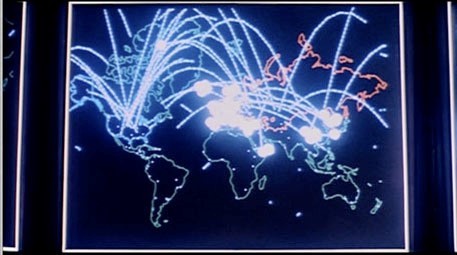
and of course, we’d want a Mapbox map styled by Anya A’Hearn to bring the 1980′s cold war vector graphics up to date, so another email was sent: “I’d hope we could go for something like this:”

Game on, and boy, did Anya deliver.
Talking about Games, Joshua Milligan had previously created a Tableau version of Tic-Tac-Toe,
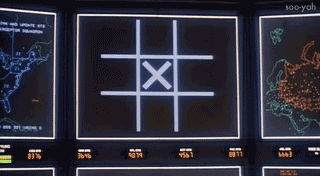

and Chris also wanted to build out the “launch code sequence”:

- so these were both incorporated into the design.
The Data.
Geocoded Nuclear Sites from Bulletin of Atomic Scientists, supplemented with FAS.org and Wikipedia
Surface to Air Missile (SAM) Sites (KML) (courtesy: IMINT)
SAM Range Rings (KML) (courtesy: IMINT)
Russian Airforce Bases (KML) (courtesy: IMINT)
Chinese Airforce Bases (KML) (courtesy: IMINT)
Air Sectors (US Only) (Shapefile) (courtesy: FAA)
US Bases (ESRI Shapefile) (courtesy: Data.gov)
Iranian Airforce Bases (KML) (courtesy Airpower.at)
Geonames
The Processes.
Web Design.
A semi-responsive template in the style of the WarGames film was designed in CSS3. I used some 3d transforms to “bend” the screens inwards, and modal windows. Thanks to: @desandro
I also created some responsive circular divisions based from this design, except I modified it for (mobile and multiple) viewports.
Javascript was used to call the Tableau Visualizations, animate the dashboards, and also to generate the UTC clocks.
Data Design.
The majority of the nuclear sites were geocoded by hand by using Mapbox Satellite View and/or Google Maps. For example, the hardened aircraft shelters at Kleine Brogel in Belgium:

But that left the rather tricky issue of dealing with the target sites. That was made slightly less ambiguous when this happened. Apart from the introduction of ICBM’s, MIRV’s and SLBM’s since 1959, and the number of countries participating in this MADness…has anything else really changed, other than the time it would take to blow us all to Kingdom Come?
Also: for the Polar Projection: I used GDAL ogr2ogr to convert the ESRI Shapefiles from Mercator: thanks for the advice from Matt Irwin of Mapbox!
Possible Improvements:
Regress targets by using GDELT sentiment
Use a population within (blast yield) radius algo
Burst/tween the REDIS Tableau cache for animation

I found this cross literally in the middle of nowhere, it says: “Icide’s cross - pray as if you’ll die tomorrow and work as if you’ll live forever”. Dumbravita, Romania, 2015. Alex Muntean




Drifting on the back roads. Turburea, Romania, 2016. Alex Muntean

FRANCE, MONTIGNAC : An artist works on true-to-life replica of renowned Lascaux’s Stone Age cave paintings, on February 29, 2016, at the future international cave arts museum, Lascaux IV, in Montignac, western France. The cave of Lascaux is one of the largest decorated caves of the Paleolithic. The age of the paintings and engravings is estimated between about 18.000 and 17.000 years. The cave of Lascaux is reproduced identically to be mounted in the International Centre of the parietal art of Montignac-Lascaux. / AFP / MEHDI FEDOUACH

Zan Romanoff clears up some misconceptions about Los Angeles.
Illustration by Rob Engvall

Meet the one-armed, durian-growing musician of Vietnam.
Photographs by Calvin Godfrey

A young man white-faced with “Vote” painted on his forehead walking in the Selma March, Alabama 1965. .
via reddit







A new mall has been built in China. But this isn’t just any old mall, this mall includes a small zoo. In this zoo six Beluga Whales are on display in a small, sterile tank. It opened just last month in 2016, and is called the “Grandview International Polar Ocean World.” As well as Belugas, this indoor “aquarium” (if it can even be called this), holds 30,000 other animals, from marine mammals to small fish.
It is most likely that these animals were captured from a wild. Imagine living in the diverse ecosystem that is the ocean, only to be lifted up from your vast home into a small pool with five other animals. You cannot go anywhere, you barley have move to room. Now really, does this sound humane? I think not.
PC: Grandview International Polar Ocean World.
What You Should Know About Scott Kelly’s #YearInSpace
1. It’s Actually More Like a Three-Year Mission

NASA astronaut Scott Kelly and Russian cosmonaut Mikhail Kornienko may have had a year-long stay in space, but the science of their mission will span more than three years. One year before they left Earth, Kelly and Kornienko began participating in a suite of investigations aimed at better understanding how the human body responds to long-duration spaceflight. Samples of their blood, urine, saliva, and more all make up the data set scientists will study. The same kinds of samples continued to be taken throughout their stay in space, and will continue for a year or more once they return.
2. What We Learn is Helping Us Get to Mars

One of the biggest hurdles of getting to Mars is ensuring humans are “go” for a long-duration mission and that crew members will maintain their health and full capabilities for the duration of a Mars mission and after their return to Earth. Scientists have solid data about how bodies respond to living in microgravity for six months, but significant data beyond that timeframe had not been collected…until now. A mission to Mars will likely last about three years, about half the time coming and going to Mars and about half the time on Mars. We need to understand how human systems like vision and bone health are affected by the 12 to 16 months living on a spacecraft in microgravity and what countermeasures can be taken to reduce or mitigate risks to crew members during the flight to and from Mars. Understanding the challenges facing humans is just one of the ways research aboard the space station helps our journey to Mars.
3. The Science Will Take Some Time

While scientists will begin analyzing data from Kelly and Kornienko as soon as they return to Earth, it could be anywhere from six months to six years before we see published results from the research. The scientific process takes time, and processing the data from all the investigations tied to the one-year mission will be no easy task. Additionally, some blood, urine and saliva samples from Kelly and Kornienko will still be stored in the space station freezers until they can be returned on the SpaceX Dragon spacecraft. Early on in the analytical process scientists may see indications of what we can expect, but final results will come long after Kelly and Kornienko land.
4. This Isn’t the First Time Someone Has Spent a Year in Space

This is the first time that extensive research using exciting new techniques like genetic studies has been conducted on very long-duration crew members. Astronaut Scott Kelly is the first American to complete a continuous, year-long mission in space and is now the American who has spent the most cumulative time in space, but it’s not the first time humans have reached this goal. Previously, only four humans have spent a year or more in orbit on a single mission, all aboard the Russian Mir Space Station. They all participated in significant research proving that humans are capable of living and working in space for a year or more.
Russian cosmonaut Valery Polyakov spent 438 days aboard Mir between January 1994 and March 1995 and holds the all-time record for the most continuous days spent in space.
Cosmonaut Sergei Avdeyev spent 380 days on Mir between August 1998 and August 1999.
Cosmonauts Vladimir Titov and Musa Manarov completed a 366-day mission from December 1987 to December 1988.
5. International Collaboration is Key

The International Space Station is just that: international. The one-year mission embodies the spirit of collaboration across countries in the effort to mitigate as many risks as possible for humans on long-duration missions. Data collected on both Kelly and Kornienko will be shared between the United States and Russia, and international partners. These kinds of collaborations help increase more rapidly the biomedical knowledge necessary for human exploration, reduce costs, improve processes and procedures, and improve efficiency on future space station missions.
6. So Much Science!

During Kelly’s year-long mission aboard the orbiting laboratory, his participation in science wasn’t limited to the one-year mission investigations. In all, he worked on close to 400 science studies that help us reach for new heights, reveal the unknown, and benefit all of humanity. His time aboard the station included blood draws, urine collection, saliva samples, computer tests, journaling, caring for two crops in the Veggie plant growth facility, ocular scans, ultrasounds, using the space cup, performing runs with the SPHERES robotic satellites, measuring sound, assisting in configuring cubesats to be deployed, measuring radiation, participating in fluid shifts testing in the Russian CHIBIS pants, logging his sleep and much, much more. All of this was in addition to regular duties of station maintenance, including three spacewalks!
7. No More Food in Pouches

After months of eating food from pouches and cans and drinking through straws, Kelly and Kornienko will be able to celebrate their return to Earth with food of their choice. While aboard the space station, their food intake is closely monitored and designed to provide exactly the nutrients they need. Crew members do have a say in their on-orbit menus but often miss their favorite meals from back home. Once they return, they won’t face the same menu limitations as they did in space. As soon as they land on Earth and exit the space capsule, they are usually given a piece of fruit or a cucumber to eat as they begin their initial health checks. After Kelly makes the long flight home to Houston, he will no doubt greatly savor those first meals.
8. After the Return Comes Reconditioning

You’ve likely heard the phrase, “Use it or lose it.” The same thing can be said for astronauts’ muscles and bones. Muscles and bones can atrophy in microgravity. While in space, astronauts have a hearty exercise regimen to fight these effects, and they continue strength training and reconditioning once they return to Earth. They will also participate in Field Tests immediately after landing. Once they are back at our Johnson Space Center, Functional Task Tests will assess how the human body responds to living in microgravity for such a long time. Understanding how astronauts recover after long-duration spaceflight is a critical piece in planning for missions to deep space.
9. Twins Studies Have Researchers Seeing Double

One of the unique aspects of Kelly’s participation in the one-year mission is that he has an identical twin brother, Mark, who is a former astronaut. The pair have taken part in a suite of studies that use Mark as a human control on the ground during Scott’s year-long stay in space. The Twins Study is comprised of 10 different investigations coordinating together and sharing all data and analysis as one large, integrated research team. The investigations focus on human physiology, behavioral health, microbiology/microbiome and molecular/omics. The Twins Study is multi-faceted national cooperation between investigations at universities, corporations, and government laboratories.
10. This Mission Will Help Determine What Comes Next

The completion of the one-year mission and its studies will help guide the next steps in planning for long-duration deep space missions that will be necessary as humans move farther into the solar system. Kelly and Kornienko’s mission will inform future decisions and planning for other long-duration missions, whether they are aboard the space station, a deep space habitat in lunar orbit, or a mission to Mars.
Make sure to follow us on Tumblr for your regular dose of space: http://nasa.tumblr.com
Today is the 144th birthday of Yellowstone National Park, officially established as a national park on March 1, 1872. Here’s a time lapse of its largest hydrothermal feature, Grand Prismatic Spring.
Time lapse plane window flight over the Peruvian Andes. Some nice scenery including a desert river valley that cuts right through the range.




Astronaut Art
Each time an astronaut flies to the International Space Station, they get the opportunity to express themselves through the photos they take of the remarkable blue sphere passing below them. It really is fascinating to observe their different styles – some seem partial to urban scenes, some wilderness. Some focus on weather, some aim their lenses at the oceans. Some aim for videos, some aim for vines, some aim for still frames.
Keep reading
Food, like voting, can be seriously personal. What we eat, how we eat, when we eat—from kids who throw their scrambled eggs on the floor to macrobiotic pescatarian grown-ups, people have some decent control over what they put in their mouths. But you’ve got to eat. On an individual level, you don’t need to vote to survive. (For the purposes of this discussion, we’re going to ignore the existential threat to democracy of nonvoting, which, I will happily posit, clearly exists. No votes, no democracy. Ipso factburger.)

Andy Warhol buying Campbell’s Soup at Gristede’s supermarket on Second Ave, 1964. .
via reddit

